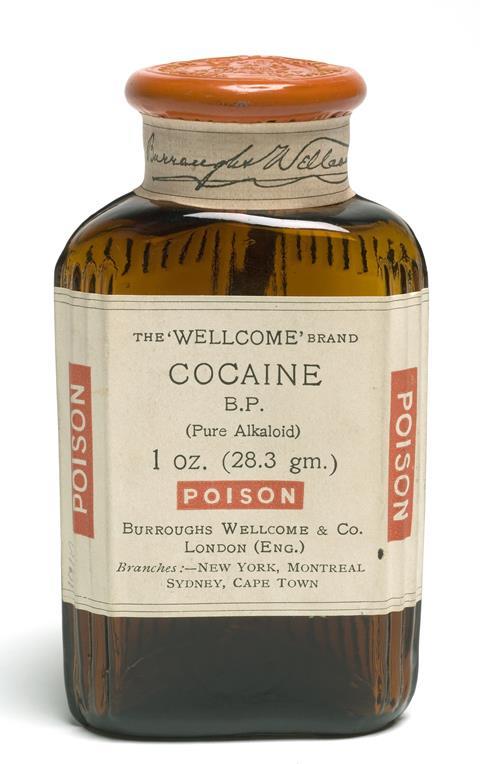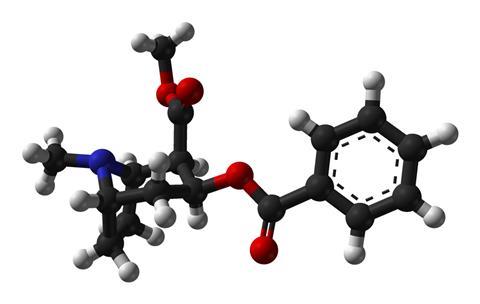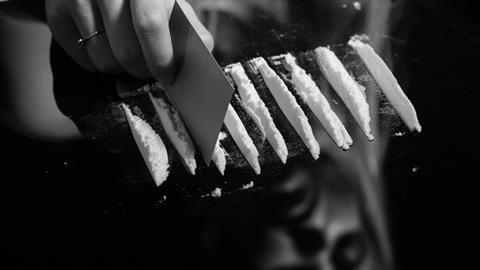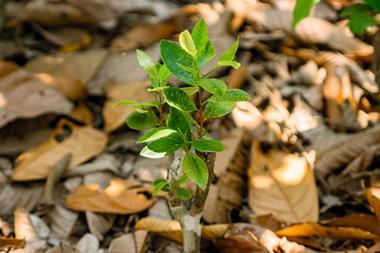Meera Senthilingam
This week, a skilled synthetic chemist, and they reside in the plant kingdom. Explaining more, here's Simon Cotton:
Simon Cotton

Plants do not waste their time and energy. They use it to make the chemicals, known as primary metabolites, that are essential to their existence as plants, chemicals that help them grow, develop or to reproduce. Plants do have one problem, though; they can't run, so they are the mercy of predators, like insects, bacteria and fungi. Secondary metabolites are the plants' answer to this, compounds that stop them being eaten.
The South American coca plant, which is native to the Andes, makes a molecule called benzoylmethylecgonine, but you might know it as cocaine, coke, snow, or any of a multitude of names. The coca plant makes cocaine from the amino acids orthinine and glutamine; it is a skilled synthetic chemist, because the cocaine molecule has 4 chiral centres, but only one of the 16 possible isomers is made by the coca plant.
For over a thousand years, the inhabitants of the Andes have chewed coca leaves; the cocaine is slowly absorbed, acts as a mild stimulant and suppresses fatigue. It enabled Inca messengers to cover large distances. After the Spanish conquest, the Spanish gave Inca slaves in the silver mines coca leaves to get more work out of them. The early 20th century polar explorer Ernest Shackleton used 'Forced March' cocaine tablets to boost his energy levels.
Cocaine was first isolated in 1855. Within a decade, a Corsican chemist named Angelo Mariani found that wine extracted the cocaine from coca leaves and marketed his discovery as 'Vin Mariani'. He sent samples to famous people and got their testimonials, among them Jules Verne, HG Wells and the great inventor, Thomas Edison. Pope Leo XIII endorsed it, and awarded it a gold medal. In the southern US, a Georgian pharmacist named John Styth Pemberton used coca leaves to make his own version of Mariani's concoction, called 'French Wine Cola'. After Prohibition came to Atlanta, he created the non-alcoholic Coca-Cola, which combined coca leaf extracts with the caffeine-containing Kola nut. Since 1903, Coca-cola has contained no cocaine, but its popularity has certainly not diminished as a result.
Cocaine found medical uses. In November 1884, the American surgeon William Stewart Halsted used cocaine injections to invent nerve-block anaesthesia. Like many others, he became a cocaine addict. Sigmund Freud, the father of psychoanalysis, helped pioneer the use of cocaine as a local anaesthetic for eye surgery; nowadays analogues like benzocaine or lidocaine are seen as safer.
Cocaine is a central nervous system stimulant; it increases the amount of 'reward' chemicals - neurotransmitters like dopamine - in the brain by stopping them from being reabsorbed, making it very addictive. Users moving on to large amounts may end up with paranoia and 'bugs under the skin' delusions, not to mention a perforated nasal septum and the risk of heart attacks.

Some cocaine users combine it with heroin, in a mixture known as a speedball, which supposedly combines the euphoriant effects of the two drugs while cancelling out their side effects. Speedballing carries a much larger risk of overdose, and the mixture is associated with many deaths, including the actors John Belushi and River Phoenix. Taking cocaine together with ethanol is worse than taking either on their own, as an enzyme in the liver reacts them together to make cocaethylene rather than metabolising the cocaine to excrete it, increasing the risk of cardiac and neurological problems.
The rise in cocaine consumption led to a drugs trade associated with South American criminal gangs; the most famous of these were probably the Colombian Medellín and Cali cartels. The most celebrated narcotics chief was Pablo Escobar who died in 1992 at the age of 43 in a shoot-out with Colombian National Police. At his peak, he was estimated to be the seventh richest man in the world, with a personal fortune of 25 billion US dollars.
Coca leaves contain up to about 0.7 per cent cocaine by dry weight. To extract cocaine from the leaves first involves mashing them with calcium hydroxide to create neutral molecules which are first dissolved in kerosene. The kerosene layer is extracted with acid, which removes protonated cocaine; the acid layer is separated and treated with base to regenerate neutral cocaine molecules. This is the crude 'coca paste', which is refined and recrystallised to make cocaine.
The human liver uses carboxylesterase enzymes to metabolise the ester group of cocaine to the free acid form, benzoylecgonine. This is the substance usually used to detect cocaine abuse, with leading sports stars including Diego Maradona, Kieren Fallon and Martina Hingis testing positive. Even more subtly, benzoylecgonine contained in sweat can be detected in the fingerprints of cocaine users, which identifies the body through which the drug has passed. Forensic scientists can detect cocaine on most banknotes using mass spectrometry; it is not that they are all used to snort cocaine, but sorting and counting machines in banks help transfer the drug from one note to another.
Cocaine has become embedded in cultures as different as the pop world and stock market high finance, both embodying the actor and comedian Robin Williams' description of cocaine as 'God's way of telling you you've got too much money'.
Meera Senthilingam
So, too much money spent on a drug that can also, it seems, be found on some of our money. Simon Cotton there, with the cultural, criminal and synthetic chemistry of cocaine. Now next week we tap in to a chemist's imagination.
Brian Clegg
'I was sitting writing at my textbook but the work did not progress; my thoughts were elsewhere. I turned my chair to the fire and dozed. Again the atoms were gambolling before my eyes. This time the smaller groups kept modestly in the background. My mental eye, rendered more acute by the repeated visions of the kind, could now distinguish larger structures of manifold confirmation: long rows, sometimes more closely fitted together, all twining and twisting in snake like motion. But look! What was that? One of the snakes had seized hold of its own tail, and the form whirled mockingly before my eyes.'
Meera Senthilingam
The famous words of German chemist Kekule there, and you can find out more about how his words relate to his structural discovery of the compound benzene by joining Brian Clegg in next week's Chemistry in its element. Until then, thank you for listening. I'm Meera Senthilingam.













No comments yet